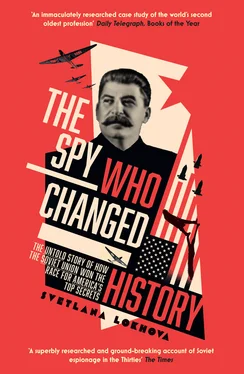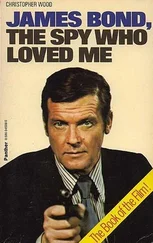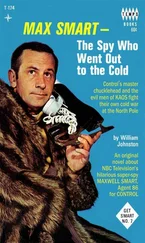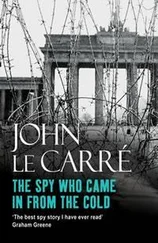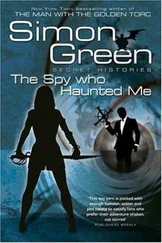Books that focus on the history of Soviet espionage in the United States and its English-speaking allies often share a troubling Anglo-centric tradition characterised by a reluctance to embrace new non-English sources, in particular those that challenge established narratives. A dearth of Russian-speaking historians is only partly to blame for this continuing problem. The study of Soviet intelligence has been shaped predominantly by the reliance on a few Western primary sources or accounts by journalists and Soviet defectors. Little regard has been given to the inherent bias in this material. For example, the first-hand accounts from former Soviet collaborators-turned-informers such as Harry Gold, Elizabeth Bentley and Boris Morros were unreliable, self-serving and hence problematic. The National Security Agency’s Venona Project that decoded intercepts of Soviet telegrams was considered unreliable as a sole source of identification as long ago as May 1950. The FBI itself recognised how hard it is to identify agents categorically. Even when Soviet sources became widely available after the collapse of the USSR the new material was used only to support established narratives, and documents that did not fit have been largely ignored.
How I found the new material is a story in itself. From the first clue in a declassified NKVD interrogation protocol of 1935, I followed a trail of evidence. That document suggested that in 1931 Soviet Military Intelligence was sending agents on espionage missions to MIT. By verifying this nugget of information through university records and public documents, I was able to uncover the whole story. This book first and foremost lets the new documents speak, and approaches the subject from the perspective of Soviet intelligence officers. This is not the traditional witch hunt to find long-dead traitors who betrayed their country for ideology or money in the 1930s or 1940s. On the contrary, this book looks at a few individuals whose lives were dedicated to the belief that they were making society better. History may have shown their vision of the world to be idealistic but nonetheless they strove hard to ensure that the Soviet Union and its hundreds of millions of people were at least somewhat prepared to fight off the scourge of the Nazis. For that, we should be grateful.
Among the many surprises and revelations in this book are the identification of a number of new Soviet spies on previously unknown operations. The findings establish that significant penetration of the US started a decade earlier than many previously believed. In addition, the involvement of major US figures in Soviet espionage began far sooner than has been made public before, with for example Earl Browder and Nathan Silvermaster active many years earlier than previously thought.
Women play a strong and full role in these early intelligence operations out in the field. In a profession dominated by men these women are not playing the traditional support roles of honey traps, such as Mata Hari. Ray (Raisa) Bennett and Gertrude Klivans are refreshingly modern young women who from an early age knew their own minds. We are privileged to hear their voices through their own words. Both were no shrinking violets but followed their own independent paths in life. Raisa Bennett had to juggle the responsibilities of being a Soviet Military Intelligence officer on a dangerous mission abroad while also mother to a young child. Gertrude Klivans had plenty of opinions and plenty of men, all the while training the future top spies how to be American.
Of historical significance is the story of Military Intelligence officer Mikhail Cherniavsky. At the time, his assassination plot attracted the close attention of the intelligence services and political elite. Only two pieces of intelligence were ever underlined by the NKVD and one was the revelation from a source in Boston of a growing Trotskyist opposition in Moscow linked to an international revolutionary movement. Cherniavsky was the ringleader of a plot to kill Stalin and replace him with Trotsky. It was Cherniavsky’s bullets that Stalin referred to in his speech to the Graduates of the Red Army Academies delivered in the Kremlin on 4 May 1935:
But these comrades did not always confine themselves to criticism and passive resistance. They threatened to raise a revolt in the Party against the Central Committee. More, they threatened some of us with bullets. Evidently, they reckoned on frightening us and compelling us to turn from the Leninist road.
Finally, through my research for this book I was delighted to lay to rest one ghost. I uncovered the life and intelligence career of Ray Bennett, the first American to serve as a Soviet Military Intelligence officer in the United States. Eighty years ago, Ray vanished from her young daughter’s life. Joy Bennett ran into Ray’s bedroom, as she did every morning, to discover her mother had disappeared. In 2017 I was able to explain to Joy her mother’s career and the reason behind her arrest and eventual disappearance. Joy kindly described my work as ‘sacred’.
During the period of history that this book covers the Russian secret services organisations changed their names many times, and for the sake of simplicity (and despite this being historically inaccurate), I have called them the NKVD or Military Intelligence throughout the book. To avoid confusing the reader further, Russian names are spelled using ‘y’ for ‘i’, so for example ‘Andrey’ not ‘Andrei’, and I have used ‘Y’ at the start of certain names, such as ‘Yershov’ not ‘Ershov’.
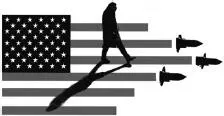
On the hot summer’s day of Sunday, 3 August 1947, a large crowd of Muscovites gathered at Tushino airfield for Aviation Day. 1From early morning they had made their way in their thousands to secure a grassy bank as a vantage point from which to watch the aerobatics and parachute jumps. They waited expectantly to cheer and applaud the heroic pilots, set to perform dizzying barrel rolls and stomach-turning loops.
The stars of the show were a new generation of military aircraft. The message that Soviet leader Joseph Stalin sent to his people and the watching world that day was clear: the Cold War had begun in earnest and his air force was equipped to respond to any threat. In the words of the rousing ‘March of the Soviet Aviators’, 2which was constantly played:
Our keen sight is piercing every atom,
Our every nerve in determination dressed
And trust us, to all enemy ultimatums
Our Air Fleet will give a quick response. fn1
On the VIP balcony, to the left of the grey-haired Stalin in his generalissimo’s uniform, stood a galaxy of Soviet aircraft designers – Alexander Yakovlev, Semyon Lavochkin, Sergey Ilyushin, Pavel Sukhoy, Artem Mikoyan, Mikhail Gurevich, fn2and the greatest of them all, Andrey Tupolev – who had given their names to a series of iconic military planes. As befitted a day dedicated to celebrating the country’s air force, each man was resplendent in uniforms decorated by rows of gleaming medals.
Standing alongside the diminutive aircraft designer Tupolev was the far taller figure of Colonel Stanislav Shumovsky, a graduate of the Massachusetts Institute of Technology (MIT). The affable, bespectacled Shumovsky was Tupolev’s friend and long-term collaborator; perhaps more significantly, he was also the most successful aviation spy in history. His latest intelligence coup, which he was still celebrating, had been to bring all of defeated Nazi Germany’s advanced jet and rocket technology back to the Soviet Union. 3But he had enjoyed his most significant successes in the USA, where he had operated with impunity since his arrival at college in 1931.
Читать дальше
